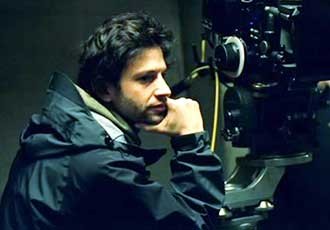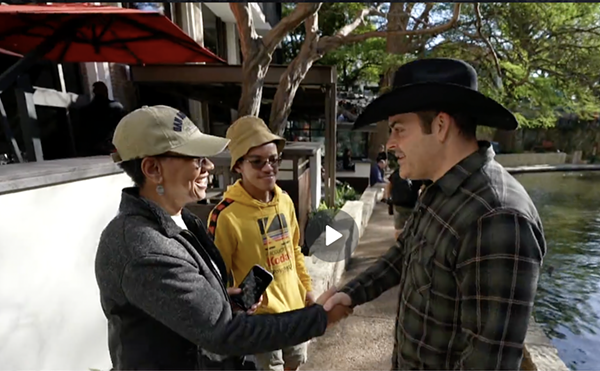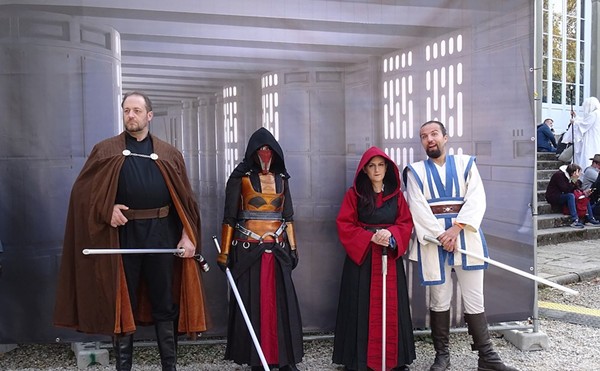Director Bennett Miller was cautious about committing to Capote, but the result is captivating
Bennett Miller was stymied.
After his 1999 documentary The Cruise garnered him a shelf full of awards and enough buzz to assure him the opportunity to transition to feature filmmaking, the lifelong New Yorker had spent four years actively searching for the right script. Even when it came along, handed to him by friend and actor Dan Futterman, he spent two weeks hemming and hawing about it. “You know,” he begins, “I don’t think I would’ve ever committed to it had Danny not grabbed me by the collar and asked, ‘Why not? It’s been your declarative purpose to do features, you’ve been looking forever, and you really like this. If not now, when?’ For a moment there, we weren’t talking about movies, but what we were doing with our lives if not this?”
| Philip Seymour Hoffman as Truman Capote |
Capote, Miller’s directorial debut from Futterman’s script — based on Gerald Clarke’s biography of the same name — will unlikely be such a dramatic pinnacle in the director’s professional life, but it is entirely possible that everything he does from here forward will be accompanied by criticism along these lines: “Hmm ... brilliant, certainly, but it’s no Capote.” And to think, he almost turned it down.
The film spans five years in the life of author Truman Capote (Philip Seymour Hoffman), beginning a year after Breakfast at Tiffany’s made him a national celebrity and a few days after a Kansan farm family, the Clutters, were shotgunned to death. That case, and in many ways Capote’s life, climaxed with the execution of the murderers whose crime, conviction, and lives Capote tried to make sense of in In Cold Blood. Hailed as the first non-fiction novel, In Cold Blood made Capote the most famous author in America for a time; its success was so monumental, in fact, that Capote was never able to follow it up, a problem that also afflicted his close friend Harper Lee (portrayed in Capote by Catherine Keener).
While Capote is the film’s primary focus, his character largely develops in juxtaposition to three other characters: convicted murderer Perry Smith (Clifton Collins Jr., Lee, and Capote’s partner Jack Dunphy (Bruce Greenwood). As Capote struggles to complete his book, he develops confusing feelings for an equally manipulative Smith; it is a relationship that teeters between affection and self-service, like most love affairs.
| Director Bennett Miller worked with longtime friend Philip Seymour Hoffman, right, to bring Truman Capote to life in Capote. |
“What fascinated me was the fact that `Capote` was a very public person and that the story was about a very private aspect of this public person,” Miller says. “Though he cares for them deeply, they’re also his subjects and their executions are vital to his completion of his work.”
Miller and Futterman, who have known each other since seventh grade, looked no further for a lead than a friend the pair had made in 1984 at a summer theater program in Saratoga, New York. Futterman was the dealmaker again, writing Hoffman (Boogie Nights, 25th Hour) a letter to the tune of, “Isn’t this what we always said we wanted to do, work together?” Hoffman agreed to come aboard a week later, taking an executive producer credit along with Futterman.
Friendships aside, Miller was still a first-time feature director and Hoffman isn’t exactly a lightweight. Add to the mix names such as Keener, Greenwood, and Chris Cooper and you have to wonder if Miller felt just a wee bit intimidated. If he did, he’s not letting on. “Not in the slightest bit,” he says quickly. “It actually more gives security, because they’re such great actors. What’s intimidating is working with people who don’t have the range.”
| “Philip Seymour Hoffman had to bring himself to a very horrible, unpleasant place and he was able to do that, in part, because we knew each other so well.” – Bennett Miller |
Still, directing a close friend can’t be easy, right? Hoffman knows how to deliver and egos can clash on sets, what with the director, especially a relative rookie, seeking to ensure his vision. “It made it easier,” Miller corrects. “We were able to just cut to the chase. Phil had the courage to say, ‘Look, this is what I need. It’s not going to be easy for me.’ He had to bring himself to a very horrible, unpleasant place and he was able to do that, in part, because we knew each other so well.”
The result is one of Hoffman’s finest performances, not so much channeling Capote and his fey mannerisms and childlike voice, but resurrecting him. It is also a largely internal performance that simultaneously elicits the viewer’s compassion and provokes revulsion. This exercise in restraint, like the film’s script and Miller’s deliberate direction, creates a film that is conscious much like a novel is conscious. Long establishing shots of stark, snow-blanketed Kansas fields “read” like a paragraph of exposition.
When you consider how accomplished Capote is as a work of cinematic art, it’s difficult to imagine that Miller was hesitant to take on a project following The Cruise. Being stuck, being patient, being whatever you want to call it, it paid off. “I think very often the people who go into directing are like the kids in class who have their hand raised all the time because they want to hear their own voice, whether they know the answer or not,” he opines. “I didn’t want to take that step until I really felt ready, until I had the right piece of material and felt mature enough and really ready to do it.” •
By Cole Haddon


















